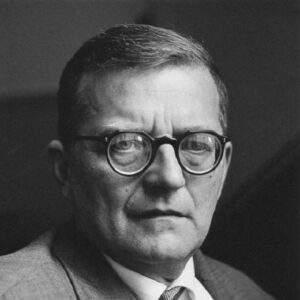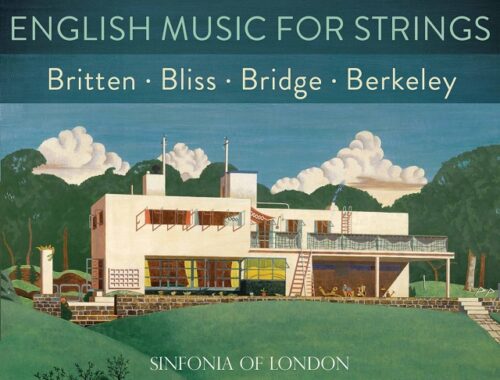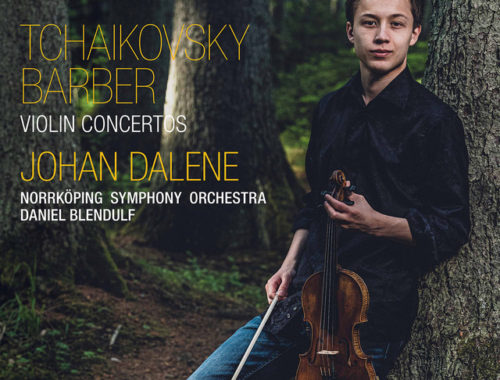GRAMOPHONE: From Where I Sit – September 2021
 Re-hearing Andris Nelsons’ splendid account of Shostakovich’s Fifteenth Symphony has left me as ever haunted by the skeletal ‘ticking’ of side drum, castanet and woodblock in the final moments of this the composer’s last symphonic utterance. Of all his many self-quotations – not least his all-pervasive musical monogram DSCH – this quirky ‘movement’ of percussion (like a kind of cosmic timepiece) is surely the most elusive and mystical. It is also the final word and last laugh on his epic symphonic journey.
Re-hearing Andris Nelsons’ splendid account of Shostakovich’s Fifteenth Symphony has left me as ever haunted by the skeletal ‘ticking’ of side drum, castanet and woodblock in the final moments of this the composer’s last symphonic utterance. Of all his many self-quotations – not least his all-pervasive musical monogram DSCH – this quirky ‘movement’ of percussion (like a kind of cosmic timepiece) is surely the most elusive and mystical. It is also the final word and last laugh on his epic symphonic journey.
As many readers will be aware its original source was the scherzo of his extraordinary Fourth Symphony and anyone familiar with Shostakovich’s ingenious way with coded messaging will deduce that the duress under which he was compelled to withdraw that symphony (namely the state-sponsored attack on his opera Lady Macbeth of Mtsensk) would not soon be forgotten. Never, actually. He clung to this motif throughout his life’s journey and twice recalled it in the autumn of his career – the Second Cello Concerto and the Fifteenth Symphony.
Who knows (not even his closest confidantes) if the direction of his work might have shifted if the Fourth Symphony had not had to wait a quarter of a century for its first performance and subsequent recognition. Who knows if this ‘Soviet artist’s reply to just criticism’ (does anybody believe that quote to be anything but ironical?) actually gave rise to the popular Fifth Symphony or if its greater ‘conformity’ and accessibility was a spontaneous desire to tap into the ‘classical’ legacy of Tchaikovsky.
The fact is that he carried this motif, this ‘porte-bonheur’, with him to the end. It clearly pleased him, it tickled him, it haunted him as it does us, and dare I say it symbolised his refusal to be silenced. As a composer it will have represented one of those inspirational moments where sound, rhythm and sensation come together in something literally unforgettable. What does it say to me? Well, it is quirky, catchy, spacey with an air of the ‘out of this world’ about it; it is ticklishly capricious but it is wistful too. And therein lies its irony. A motif like this never gives up its secrets. It marks time but it is also timeless.
And there’s something else. The motif first resurfaced in the second Cello Concerto that Shostakovich wrote for Mstislav Rostropovich in 1966 – and in later remarking that the work might be regarded as his Fourteenth Symphony with obbligato cello rather than voices was he perhaps reinforcing the view that his final symphonies – shrouded as they are in the lengthening shadows of mortality – were in fact carrying many unanswered questions into the hereafter? I once asked Rostropovich – very much the horse’s mouth in these matters – what his view of that percussive leitmotiv was. We were sat in his Paris apartment, so jam-packed with Russian artefacts as to make one wonder if he and Galina Vishnevskaya had raided the Winter Palace on their exit from the Soviet Union… and he concurred with the idea that this echo from the dark days of the Fourth Symphony could indeed be construed as a last laugh in the closing bars of his last symphony. But he also saw it as ‘a ladder’ (his words) to eternity – his ‘lucky charm’, metaphorically speaking, clutched in his hand.
You May Also Like

GRAMOPHONE Review: English Music For Strings – Sinfonia of London/John Wilson
24/02/2021
GRAMOPHONE Review: Barber / Tchaikovsky Violin Concertos – Johan Dalene, Norrköping Symphony Orchestra/Blendulf
26/02/2020

